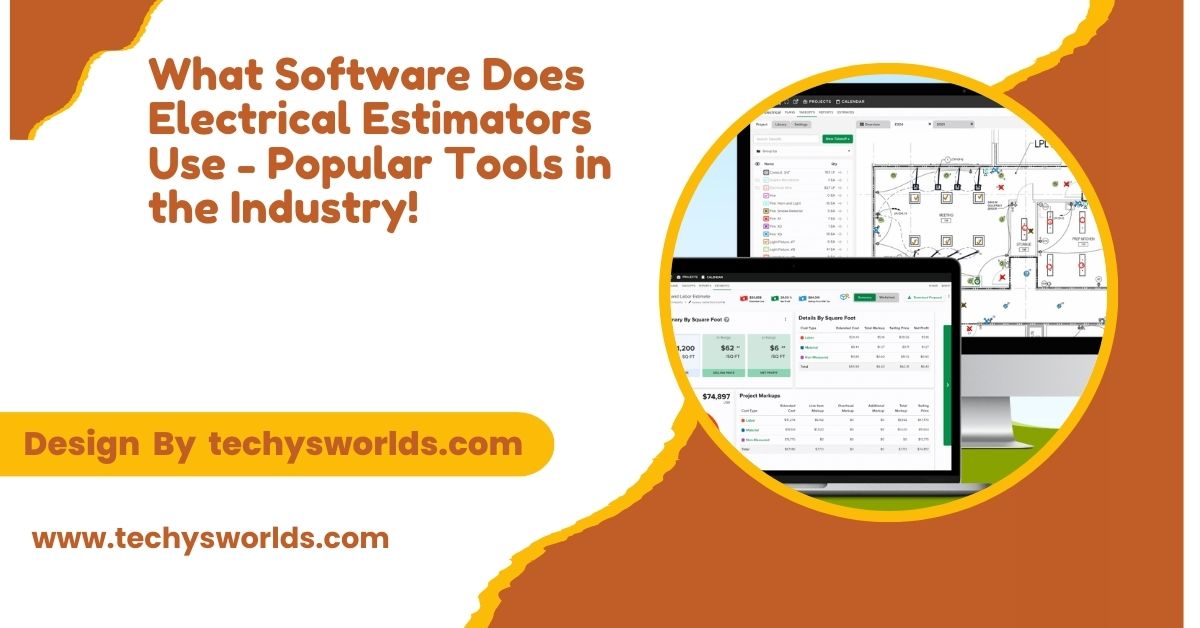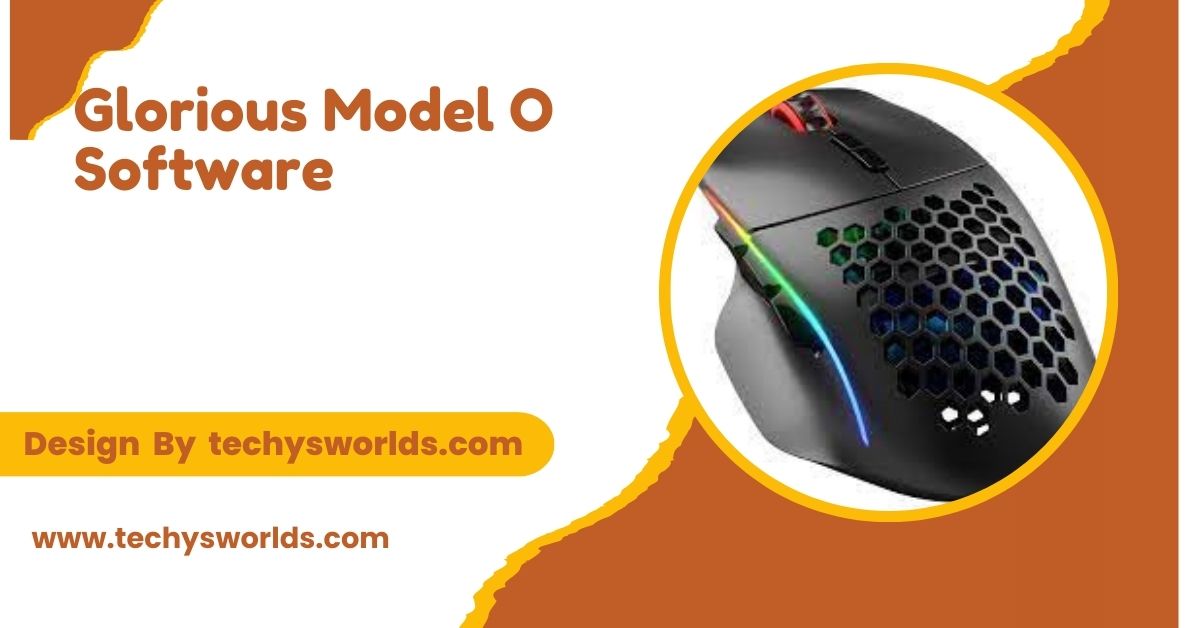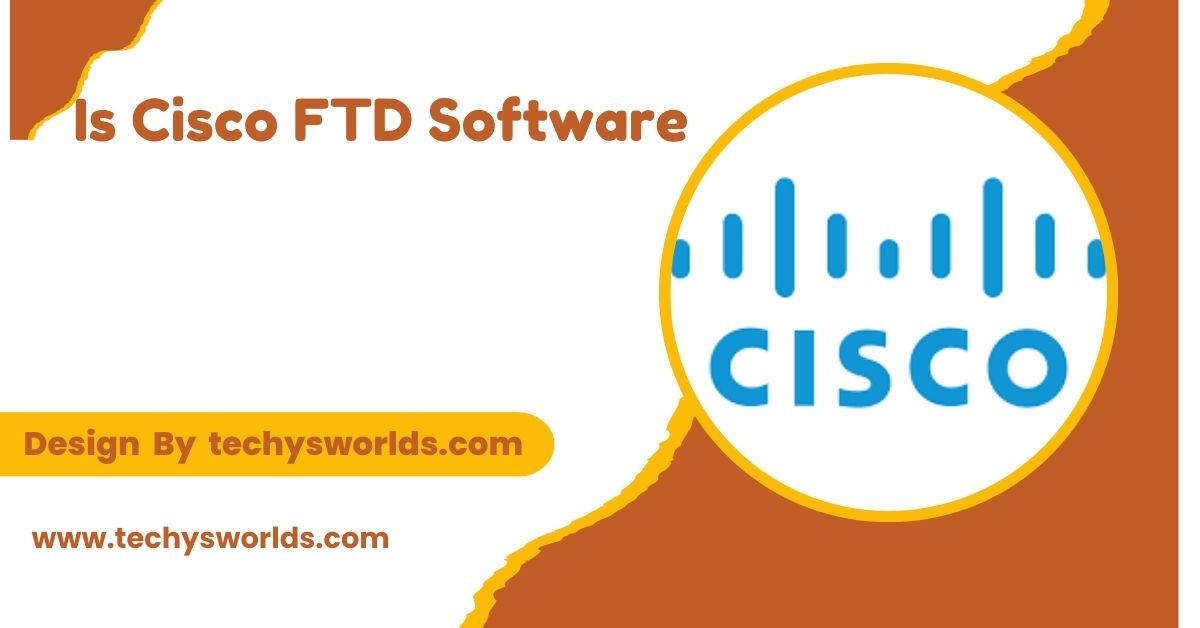“Electrical estimators use software like Accubid and PlanSwift for accurate cost estimates and streamlined project management.”
In this article, we will talk about “What Software Does Electrical Estimators Use”.
Electrical estimators play a crucial role in the construction and electrical contracting industry by providing accurate cost estimates for projects. The effectiveness of an electrical estimator often hinges on the software tools they utilize. their features, benefits, and how they can streamline the estimating process. By understanding the landscape of software available, estimators can choose the right tools to enhance their workflow and improve project outcomes.
The Significance of Electrical Estimators:
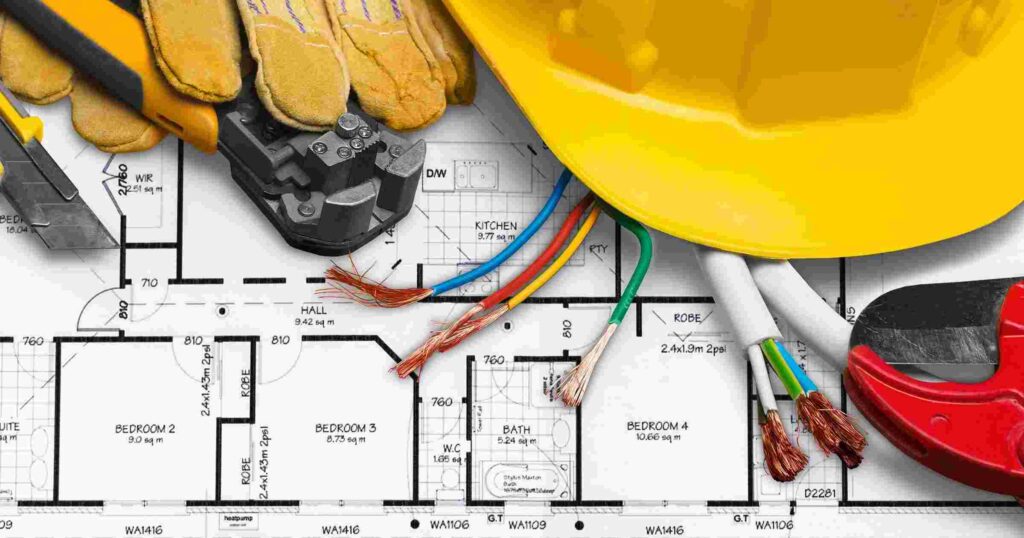
Overview of Electrical Estimation:
Electrical estimation involves calculating the costs associated with electrical projects, including labor, materials, and overhead. Accurate estimates are essential for contractors to ensure profitability and competitiveness. Estimators analyze project plans, specifications, and other documents to determine the scope of work and generate precise estimates.
This process not only requires technical knowledge but also an understanding of market trends and pricing fluctuations. By accurately assessing the project requirements, estimators can help prevent costly mistakes and foster strong client relationships.
The Role of Accuracy in Estimation:
Accurate estimates are vital for successful project execution. Inaccuracies can lead to budget overruns, delays, and potential disputes with clients. By using advanced software tools, electrical estimators can enhance their accuracy, improve efficiency, and ensure they remain competitive in a challenging market.
Additionally, reliable estimates contribute to better resource allocation and project planning, allowing teams to work more cohesively. As the construction landscape evolves, the importance of precision in estimating cannot be overstated, making the right software an essential component of success.
Also Read: Which Is The Cheapest DAW Software To Buy – Create Music on a Budget!
Software Used by Electrical Estimators:
Takeoff Software:
Takeoff software is a critical tool for electrical estimators. It enables them to quickly measure and quantify materials required for a project based on digital plans. This software allows estimators to streamline the takeoff process, reducing manual errors and saving time. The ability to perform digital takeoffs directly from blueprints significantly speeds up the estimation process, allowing estimators to focus on other critical tasks.
Many takeoff solutions also offer features like project collaboration and cloud storage, enhancing accessibility and teamwork. By integrating takeoff software into their workflow, estimators can improve overall efficiency and accuracy.
Features of Takeoff Software:
- Digital Plan Measurement: Users can measure lengths, areas, and quantities directly from digital drawings, improving precision.
- Integration with Estimating Tools: Many takeoff software options integrate seamlessly with estimating software, allowing for smooth data transfer.
- Customization Options: Estimators can create custom assemblies and item libraries tailored to specific projects or company standards, facilitating unique project requirements.
Estimating Software:
Estimating software is designed specifically for creating detailed cost estimates. This software typically includes features for labor, materials, overhead, and profit margin calculations, enabling estimators to generate comprehensive quotes quickly. The best estimating software options provide a user-friendly interface, which allows estimators to navigate through complex projects with ease.
Additionally, many platforms offer robust reporting capabilities, helping estimators communicate their findings effectively to clients and stakeholders. Utilizing estimating software can lead to increased productivity, enabling estimators to take on more projects with confidence.
Essential Features of Estimating Software:
- Cost Database: Many estimating software options come with built-in cost databases for materials and labor, ensuring estimators have up-to-date pricing.
- Templates and Standards: Users can create and utilize templates for various project types, streamlining the estimating process and maintaining consistency.
- Reporting Tools: Estimators can generate detailed reports for clients, enhancing transparency and communication while showcasing professionalism.
The Role of Project Management Software:
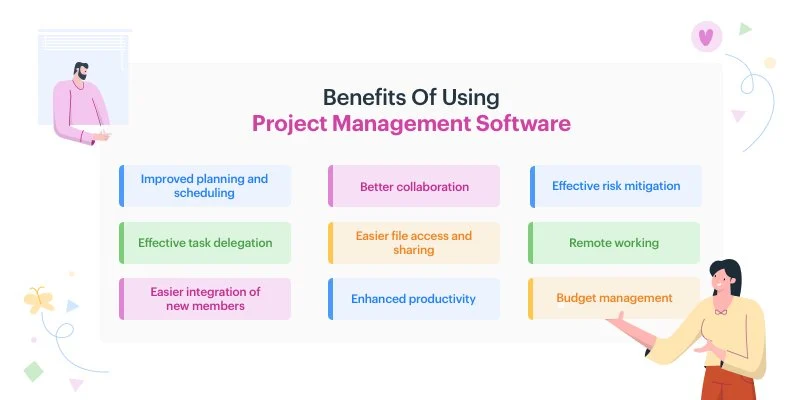
Project management software plays a complementary role in the estimating process. While its primary function is to oversee project execution, it often includes estimating modules that help estimators maintain budgets throughout the project lifecycle. This integration allows estimators to track costs in real-time, enabling them to adjust estimates as necessary.
By using project management software, estimators can collaborate more effectively with other team members and stakeholders, fostering a cohesive approach to project planning and execution. This collaboration is essential for identifying potential challenges early and addressing them proactively.
Benefits of Project Management Software:
- Budget Tracking: Users can monitor expenditures in real-time, ensuring that the project remains within budget and on schedule.
- Collaboration Tools: Project management software often includes features that allow for collaboration among team members, improving communication and efficiency.
- Document Management: Estimators can store and manage project documents in one central location, making it easier to access necessary information and maintain organization.
Electrical Design Software:
Electrical design software is essential for creating detailed electrical system designs and schematics. While primarily used by engineers, it can also assist estimators in understanding the project scope and requirements. This software often provides tools for performing load calculations and simulating electrical systems, which can be beneficial during the estimating process.
By utilizing electrical design software, estimators can gain a comprehensive view of the project, enabling them to generate more accurate estimates. Furthermore, the integration of design and estimating processes enhances collaboration between engineers and estimators, leading to better project outcomes.
Also Read: What Softwares Are Used In Data Entry Texas – Exploring Popular Tools!
Important Features of Electrical Design Software:
- Schematic Creation: Users can create detailed electrical schematics, ensuring all components are accurately represented and understood.
- Load Calculations: Some software options include tools for performing load calculations, which are critical for ensuring electrical systems are adequately designed and safe.
- Integration with Estimating Tools: Certain design software can integrate with estimating tools, allowing for a more seamless workflow from design to estimation, which reduces discrepancies.
Popular Software Options for Electrical Estimators:

Bluebeam Revu:
Bluebeam Revu is widely used for digital takeoffs and document management. Its powerful markup tools and measurement capabilities make it an ideal choice for electrical estimators. With features tailored for collaboration, users can share documents and markup information with team members in real-time.
This facilitates quicker decision-making and enhances project efficiency. Moreover, the software’s ability to integrate with other estimating tools further streamlines the workflow for estimators, enabling a smoother process from takeoff to final estimates.
- Key Features: Digital takeoff, customizable markup tools, and integration with estimating software.
- Benefits: Enhanced accuracy in takeoffs and efficient collaboration among project teams.
Accubid:
Accubid is a popular estimating software tailored specifically for electrical contractors. It offers a robust set of features designed to streamline the estimating process. Users benefit from a comprehensive cost database and customizable templates that cater to various project types.
Accubid’s user-friendly interface makes it accessible for both seasoned estimators and those new to the field. Additionally, its project management capabilities allow users to track project progress, ensuring estimates align with actual costs as the project unfolds.
- Key Features: Cost database, customizable templates, and project management integration.
- Benefits: Fast and accurate estimates, along with tools for managing project budgets.
Also Read: What Software Does Joe Rogan Use For Subtitles – A Deep Dive into Subtitling Technology!
PlanSwift:
PlanSwift is a user-friendly takeoff software that allows estimators to perform digital measurements quickly. Its versatility makes it suitable for various trades, including electrical estimation. The software supports a range of file types, enabling users to work with existing plans and drawings effortlessly.
By utilizing PlanSwift, estimators can streamline their takeoff process, enhancing both speed and accuracy. The drag-and-drop functionality simplifies the measurement process, allowing users to focus more on analysis and less on data entry.
- Key Features: Drag-and-drop functionality, easy integration with Excel, and customizable assemblies.
- Benefits: Simplified takeoff process and enhanced accuracy.
eTakeoff:
eTakeoff provides comprehensive takeoff solutions that enhance productivity for electrical estimators. Its features include measurement tools and integration with estimating software, making it a versatile option for contractors.
With eTakeoff, users can perform both 2D and 3D takeoffs, allowing for a more detailed analysis of the project. The software also enables project sharing, improving collaboration among team members and facilitating better communication throughout the estimating process.
- Key Features: 2D and 3D takeoff capabilities, project sharing, and cost database integration.
- Benefits: Improved efficiency and collaboration among estimating teams.
Sage Estimating:
Sage Estimating is a robust estimating software that caters to various construction trades, including electrical estimation. Its advanced features help estimators produce accurate bids, ensuring competitive pricing. Sage offers a detailed cost database, which is regularly updated to reflect current market prices.
Additionally, its customizable reporting tools enable users to create professional proposals that enhance client communication. The software’s integration capabilities allow it to work seamlessly with other construction management tools, further enhancing efficiency.
- Key Features: Detailed cost database, customizable templates, and reporting capabilities.
- Benefits: Streamlined estimating process and accurate project cost management.
Overview of Building Information Modeling (BIM) Software:
BIM software, such as Autodesk Revit, is increasingly used in electrical estimation. It allows estimators to visualize the project in 3D, which can lead to more accurate estimates. By using BIM, estimators can detect potential issues before construction begins, mitigating risks and reducing change orders.
The software facilitates collaboration between different disciplines, ensuring that all aspects of the project are aligned. This level of integration can lead to significant time and cost savings throughout the project lifecycle.
- Key Features: 3D modeling, clash detection, and integration with estimating tools.
- Benefits: Enhanced visualization of electrical systems and improved collaboration among project stakeholders.
Integrating Estimation Software with Other Tools:
Importance of Integration:
Integrating estimating software with other tools, such as project management and design software, can greatly enhance efficiency. This integration allows for seamless data transfer, reducing the need for manual data entry and minimizing errors. Moreover, having all project information in one place allows estimators to access vital data quickly, making the estimating process smoother. As the complexity of projects increases, the ability to integrate different software tools becomes even more crucial. Estimators can make better-informed decisions based on real-time data and collaborate more effectively with team members across various disciplines. This holistic approach not only improves accuracy but also fosters a culture of teamwork, ensuring everyone is aligned toward common project goals.
Benefits of Integration:
- Improved Accuracy: Reduces the risk of errors through automated data transfer, leading to more reliable estimates.
- Streamlined Workflows: Facilitates collaboration and communication among team members, enabling faster decision-making.
- Enhanced Project Management: Allows for real-time tracking of project costs and timelines, ensuring that estimators stay informed throughout the project lifecycle.
FAQ’s
1. What are the main software categories used by electrical estimators?
Electrical estimators primarily use takeoff software, estimating software, project management software, and electrical design software to streamline their estimating processes and enhance accuracy.
2. How can takeoff software benefit electrical estimators?
Takeoff software allows estimators to quickly measure and quantify materials from digital plans, reducing manual errors and saving time in the estimating process.
3. Is it necessary to integrate estimating software with other tools?
Integration is beneficial as it enhances efficiency, improves accuracy, and streamlines workflows, allowing for better collaboration among team members.
4. Can BIM software be used for electrical estimation?
Yes, BIM software helps electrical estimators visualize projects in 3D, leading to more accurate estimates and improved collaboration between disciplines.
5. What should electrical estimators consider when choosing software?
Estimators should consider features such as user-friendliness, integration capabilities, cost databases, and the specific needs of their projects when selecting software.
Conclusion
The software tools used by electrical estimators are integral to producing accurate and efficient cost estimates. From takeoff and estimating software to project management and electrical design tools, each type of software offers unique benefits that can streamline the estimating process. By understanding the features and capabilities of these tools, electrical estimators can choose the right software to enhance their workflow and deliver better project outcomes. As technology continues to evolve, staying updated with the latest software advancements will be crucial for estimators aiming to maintain a competitive edge in the industry.
